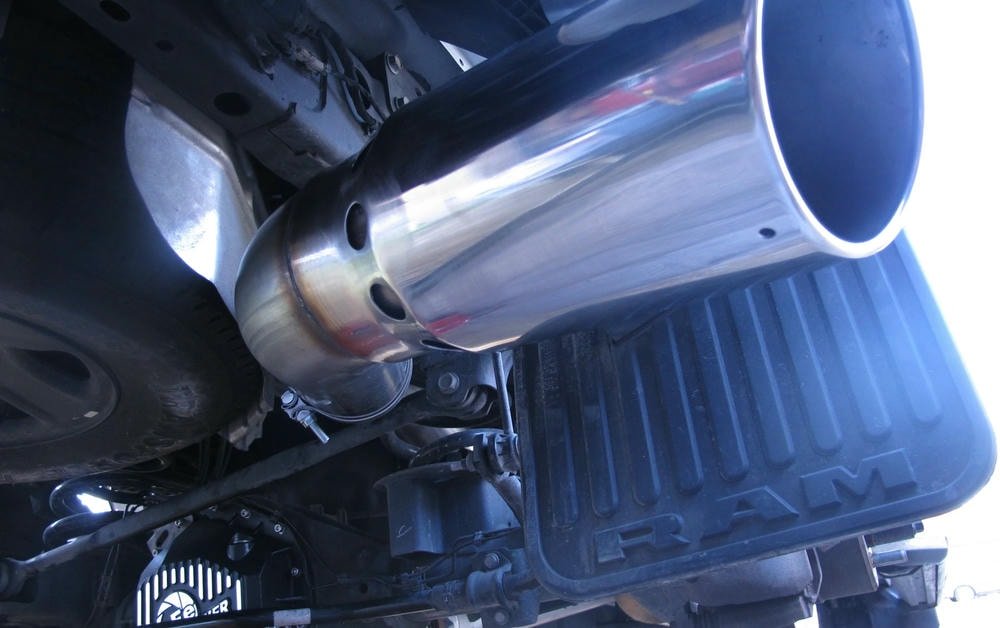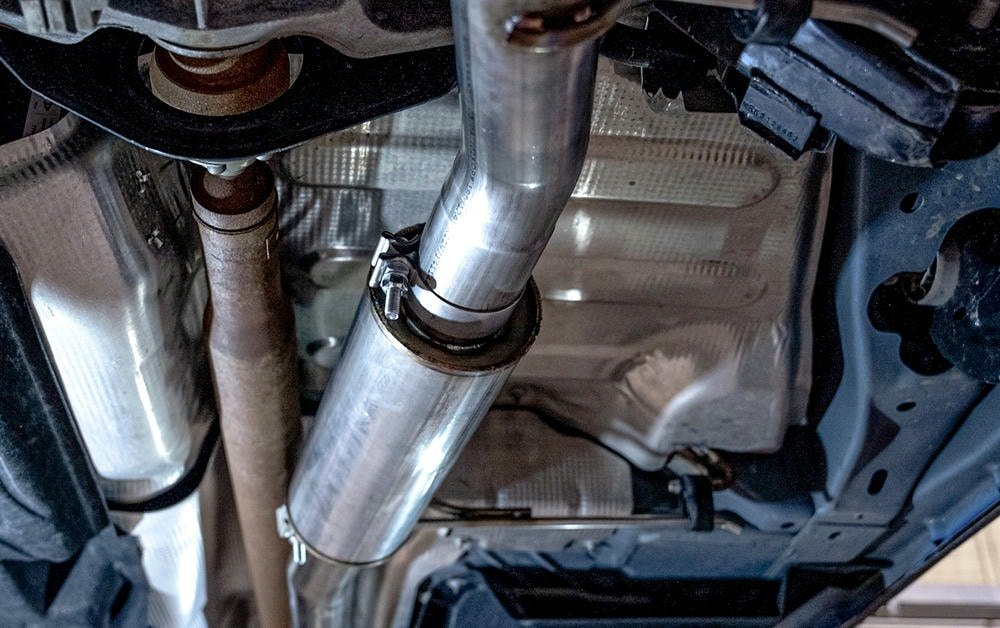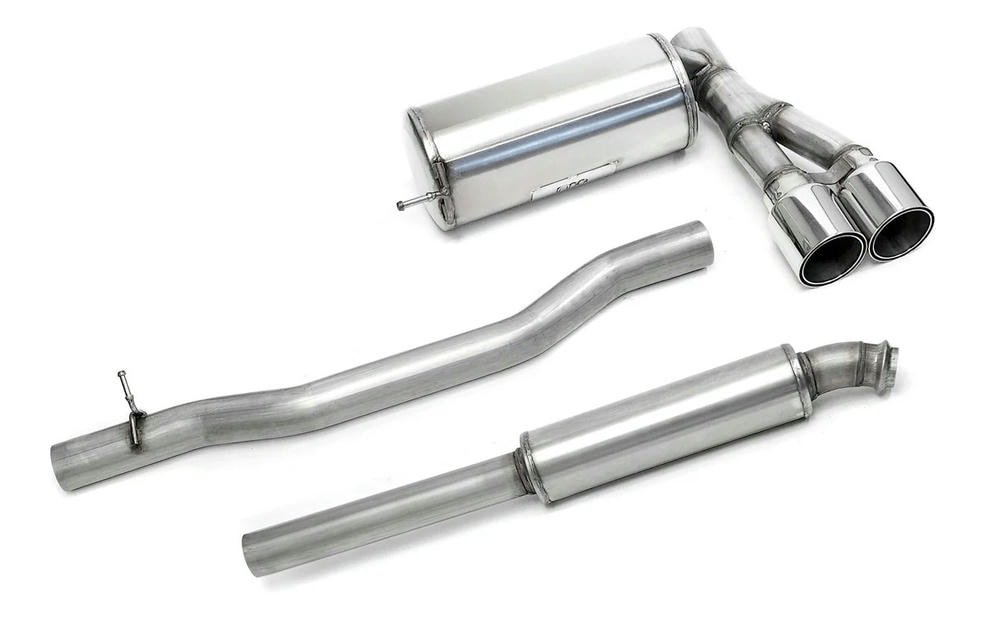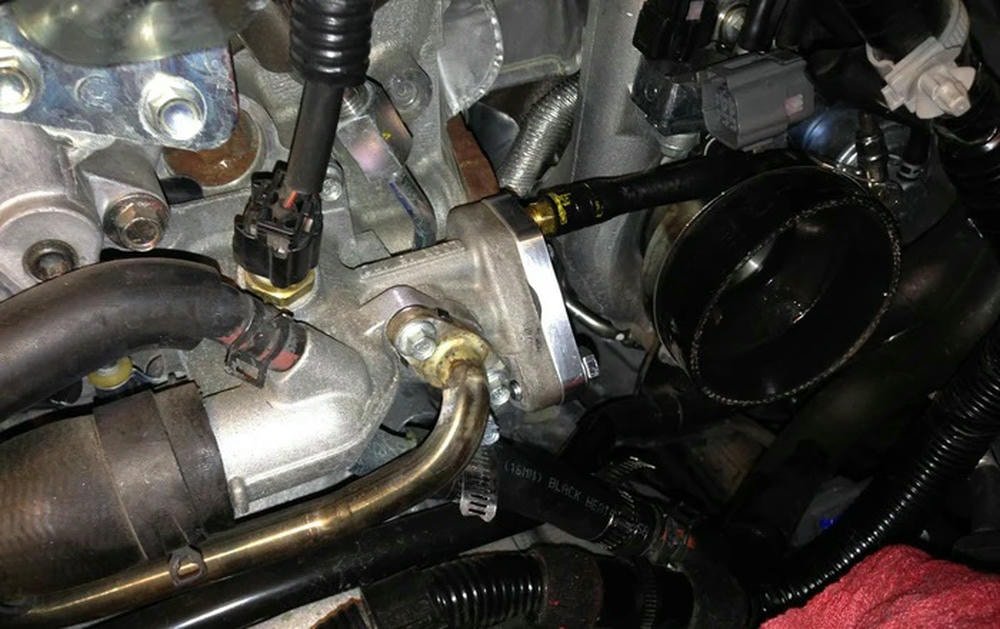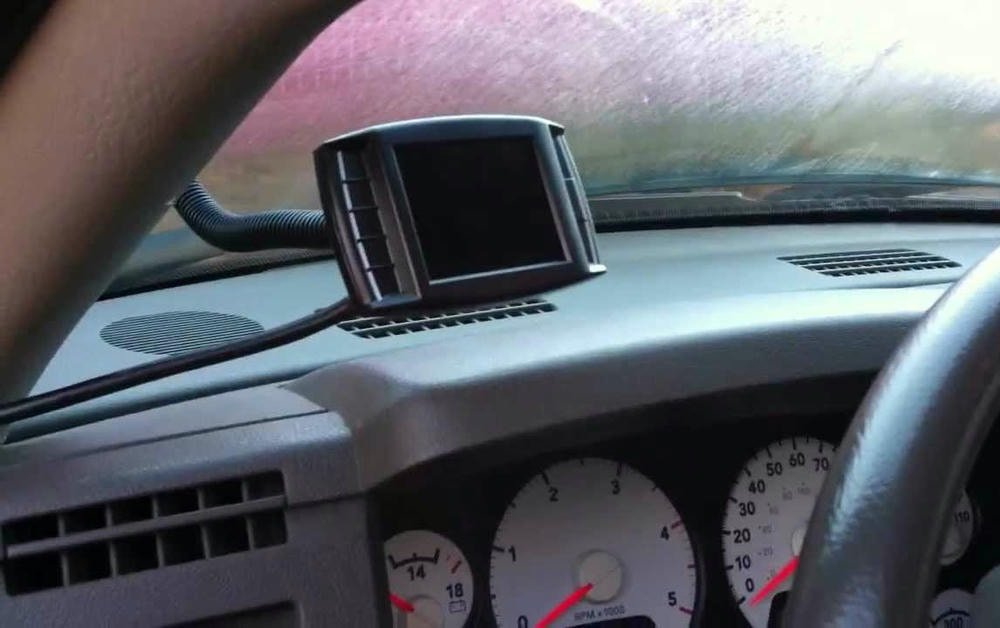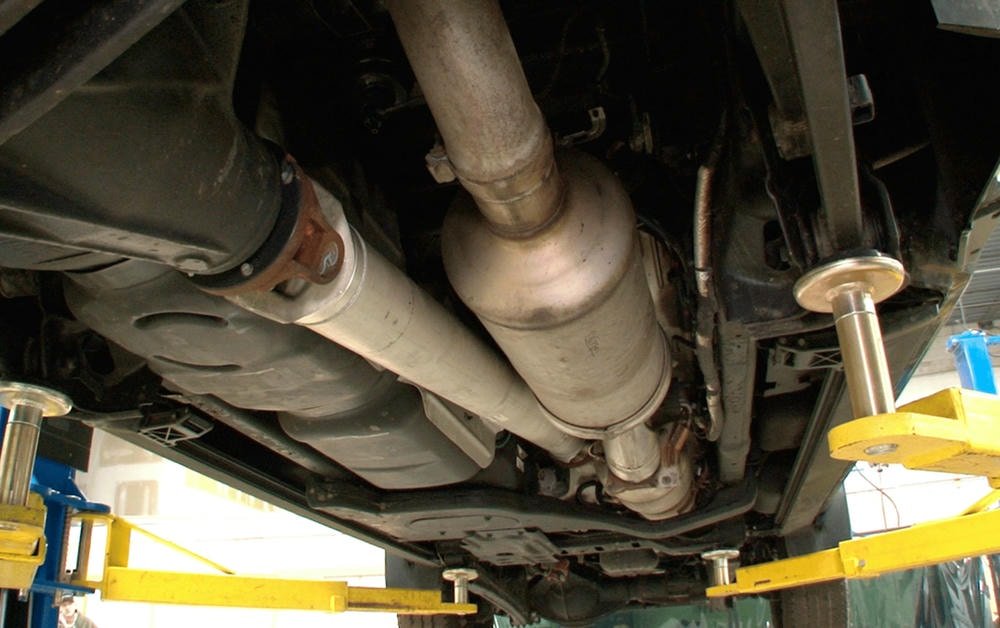Choosing a DPF Back exhaust system is a smart move for propietarios de camiones diesel. This type of system improves how trucks run. It makes them cooler, quieter, and more efficient on fuel. Trucks with this system respond better when you press the gas pedal.
Also, they follow the rules for clean air without losing power.
These systems are easy to install because they do not require changing the diesel particulate filter (DPF). This keeps the air clean and saves time on installation. Over time, using one can also save money on fuel costs.
For those who own diesel trucks and care about performance and following emission laws, it’s worth considering.
Learn why picking a DPF back exhaust might be right for you.
Índice
ToggleKey Benefits of DPF Back Exhaust Systems
DPF back exhaust systems boost exhaust flow and fuel economy in diesel trucks. They meet emission rules while keeping the diesel particulate filter working right.
Flujo de escape mejorado
Upgrading to a DPF back exhaust system can make a big difference in how a diesel truck breathes. It allows the exhaust gases to exit more freely. This is crucial for diesel trucks, including models like GMC Sierra and Chevy Silverado.
A smoother exhaust flow means less backpressure. Less backpressure helps the engine run better.
Truck owners often see changes after installing these systems. One owner of an F250 noticed his truck ran cooler and quieter with improved throttle response. “I felt the difference right away,” he said.
It’s not just about power; it’s about efficiency too.
Enhanced Fuel Efficiency
A DPF back exhaust system boosts fuel efficiency in diesel trucks. This happens because the reduce los gases de escape backpressure. Less backpressure means the engine does not have to work as hard to push out exhaust gases.
This leads to less fuel consumption for the same amount of power.
Diesel particulate filters (DPFs) catch soot and other particles from diesel exhaust. Keeping the DPF while upgrading the exhaust ensures that emissions stay low and fuel economy improves.
Diesel truck owners who choose a DPF back exhaust see a noticeable difference in how much diesel they use over time, making it a smart upgrade for those looking to save on fuel costs without breaking any laws regarding emissions.
Compliance with Emissions Regulations
DPF back exhaust systems help diesel truck owners meet strict air cleaner rules. These systems catch soot and particulate matter from diesel fuel that is not fully burned. This means trucks can pass emissions tests more easily.
The Diesel Particulate Filter (DPF) plays a big part in this process. It traps the soot and combustion particles before they leave the tailpipe.
Keeping the DPF in place also ensures that modifications do not break laws on emission control. Many areas have tough rules about diesel particulates to keep the air clean. A DPF back system lets owners upgrade their exhaust without risking fines or failed inspections.
This choice supports both performance goals and compliance with environmental standards, making it a smart move for diesel-powered vehicle drivers who care about both speed and staying green.
Easier Installation Compared to Full Exhaust Systems
Installing a DPF back exhaust system is simpler than putting in a full exhaust upgrade. The reason lies in the design. A DPF back setup only replaces parts from the diesel particulate filter to the tail pipe.
This means less work and fewer parts to deal with. You don’t have to touch the catalytic converter or other upfront components. For diesel truck owners, this cuts down on installation time and complexity.
Upgrading your exhaust system shouldn’t be a weekend-long project.
With just basic tools found in most garages, many diesel vehicle enthusiasts can handle this job themselves. It’s an approachable project that improves performance without needing deep mechanical skills or specialized equipment like for turbocharged engine modifications or custom muffler installations.
Retained DPF Functionality
Choosing a DPF back exhaust keeps the diesel particulate filter in place. This filter catches soot from diesel engines, keeping air cleaner. With this system, trucks meet emission laws without losing power.
The design makes sure trucks stay legal and efficient.
Keeping the original DPF also means less hassle for truck owners. There’s no need to replace or alter it for custom systems. This choice supports both performance and environment safety.
Truck drivers can enjoy a strong ride while following rules for clean air.
Considerations Before Choosing a DPF Back Exhaust System
Picking the right DPF back exhaust system needs careful thought. You must check if it fits your truck and meets your power goals within your budget.
Compatibility with Your Vehicle
Checking if a DPF back exhaust system fits your diesel truck is key. Every model has unique engine and exhaust layouts. For example, Cummins engines in some trucks might need different exhaust systems than Power Stroke diesel engines found in others.
This means the aftermarket exhaust you choose must match your truck’s specific make and model.
To ensure the right fit, owners should look at their truck’s specs closely or consult with professionals. Some systems are made for turbocharged engines, which could improve efficiency and performance.
But picking the wrong one can lead to problems or even damage. Diesel tuning experts often have charts or guides that help find compatible systems for various vehicles, including details like muffler size and air filter requirements.
Performance Goals
Diesel truck owners often upgrade to a DPF back exhaust system aiming for specific performance goals. They want better torque and power from their engines. A diesel particulate matter filter traps soot, which can slow down the engine.
Removing this block with a DPF back exhaust improves exhaust flow and turbocharger efficiency. This means trucks run better and waste less fuel.
A driver shared his experience after installing a DPF back exhaust on his Denali diesel truck. Before the change, his truck struggled up hills and used too much fuel on long trips.
After the upgrade, he noticed an immediate difference in how smoothly his truck climbed hills and saw a drop in fuel use by about 10%. Owners looking to customize their diesel trucks for more muscle or savings at the gas station consider upgrading to a DPF back exhaust as a wise choice.
Budget and Cost Implications
Choosing a DPF back exhaust system affects your wallet. The price varies depending on the brand and quality. Some systems cost a few hundred dollars, while others can reach over a thousand.
Researching the market is key to find a good deal that matches your diesel truck’s needs without breaking the bank.
Owners share their experiences with different brands and models online. This makes it easier to decide what fits best for performance improvements within budget limits. Installation costs also play a role.
Some choose to install themselves to save money, but hiring professionals ensures it’s done right, adding to the overall expense.
Conclusión
Experts agree, a DPF back exhaust system stands out for diesel truck owners. Dr. Emily Carter, with 20 years in automotive engineering, leads the way in this field. Holding a PhD from MIT and many awards, she knows her stuff about diesel vehicles and custom exhaust systems.
Dr. Carter says that DPF back systems improve how gas leaves your truck. This helps trucks run better and use less fuel. She points to studies showing these benefits come from better exhaust flow design.
She also talks about safety and rules. These systems meet strict laws on air pollution without losing their edge on performance or fuel savings.
For daily use, Dr. Carter suggests picking a system that fits well with your vehicle type and what you need from it. She adds that while they cost more at first than other upgrades, they pay off by making trucks work smoother and cleaner over time.
When looking at pros and cons, Dr.Carter reminds us that not all vehicles will see the same gains in performance or efficiency improvements as others might experience after installing these systems; compatibility plays a big role here.
Her final take? For those wanting to upgrade their diesel truck while keeping it legal and efficient, choosing a DPF back exhaust is wise.
Preguntas frecuentes
Why are DPF back exhausts better for diesel engines?
DPF back exhaust systems, specific to diesel vehicles, offer an upgrade over traditional exhaust mods. This system improves the flow of gases from incomplete combustion in the internal combustion engine, enhancing performance.
How does a DPF back exhaust compare to a cat-back system?
While both are custom exhaust systems designed for performance enhancement, a DPF back exhaust is specifically engineered for diesel engines. It focuses on dealing with soot and particulates from incomplete combustion more effectively than cat-back systems.
¿Puede un escape trasero DPF mejorar el rendimiento de mi vehículo?
Yes! A significant advantage of installing a DPF back exhaust is its potential impact on your diesel engine’s performance. By improving the flow of post-combustion gases, this type of aftermarket exahust can enhance overall engine efficiency.
¿Es difícil instalar un DPF de nuevo exahust en mi Corvette Stingray o Denali camión?
La complejidad de la instalación puede variar en función de las especificaciones del vehículo y del diseño del producto elegido; sin embargo, la mayoría de los fabricantes de recambios diseñan sus productos teniendo en cuenta la facilidad de instalación, incluso en vehículos de altas prestaciones como el Corvette Stingray o los camiones GMC Denali.
¿Qué debo tener en cuenta al elegir entre distintos tipos de sistemas de escape personalizados?
Al seleccionar una mejora para los silenciadores de su vehículo o la sustitución completa del sistema, tenga en cuenta factores como la compatibilidad con su modelo específico (por ejemplo, si conduce un diésel), las mejoras deseadas (por ejemplo, mayor potencia o reducción del ruido) y las limitaciones presupuestarias.

